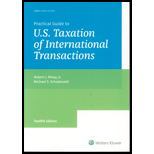
Reference librarians
are available to assist you
In Person: 1st Floor Reference Desk
Phone: 414-288-3837
Email: via web form
Hours: Library Service Hours

Scan QR Code
to View List
on Phone
 The Lawyer Millionaire : The Complete Guide for Attorneys on Maximizing Wealth, Minimizing Taxes, and Retiring with Confidence by Darren P. Wurz
The Lawyer Millionaire : The Complete Guide for Attorneys on Maximizing Wealth, Minimizing Taxes, and Retiring with Confidence by Darren P. Wurz Together Unbroken : Stories, Law, Practice, and Healing at the Intersection of Domestic Violence and Child Welfare by Sara B. Block
Together Unbroken : Stories, Law, Practice, and Healing at the Intersection of Domestic Violence and Child Welfare by Sara B. Block Reports from the Notebooks of Edward Coke by Sir John Baker (Editor)
Reports from the Notebooks of Edward Coke by Sir John Baker (Editor) Ethical Standards in the Public Sector : A Guide for Government Lawyers, Clients, and Public Officials (Third edition) by Jennifer G. Rodgers (Editor); Evan A. Davis (Editor)
Ethical Standards in the Public Sector : A Guide for Government Lawyers, Clients, and Public Officials (Third edition) by Jennifer G. Rodgers (Editor); Evan A. Davis (Editor) Cost-Effective Child Custody Litigation by Samuel E. Thomas; Kumudha N. Kumarachandran
Cost-Effective Child Custody Litigation by Samuel E. Thomas; Kumudha N. Kumarachandran The Lease Manual : A Practical Guide to Negotiating Office, Retail, and Industrial Leases (Second edition) by April F. Condon
The Lease Manual : A Practical Guide to Negotiating Office, Retail, and Industrial Leases (Second edition) by April F. Condon Anatomy of Mortgage Loan Documents : Understanding and Negotiating Key Commercial Real Estate Loan Documents (Third edition) by Lawrence Uchill
Anatomy of Mortgage Loan Documents : Understanding and Negotiating Key Commercial Real Estate Loan Documents (Third edition) by Lawrence Uchill Heirs' Property and the Uniform Partition of Heirs Property Act : Challenges, Solutions, and Historic Reform by Thomas W. Mitchell (Editor); Erica Levine Powers (Editor)
Heirs' Property and the Uniform Partition of Heirs Property Act : Challenges, Solutions, and Historic Reform by Thomas W. Mitchell (Editor); Erica Levine Powers (Editor) Title Insurance : A Comprehensive Overview of the Law and Coverage (Fifth edition) by James L. Gosdin
Title Insurance : A Comprehensive Overview of the Law and Coverage (Fifth edition) by James L. Gosdin Palmer's The Law of Restitution (3rd edition) by George E. Palmer
Palmer's The Law of Restitution (3rd edition) by George E. Palmer Guide to Executive Compensation : Legal and Regulatory Compliance Issues by Sharon Reece; Kelsey N.H. Mayo; Jesse A.A. St. Cyr
Guide to Executive Compensation : Legal and Regulatory Compliance Issues by Sharon Reece; Kelsey N.H. Mayo; Jesse A.A. St. Cyr What is a Copyright (Fourth edition)
What is a Copyright (Fourth edition) Pre-ANDA Litigation : Strategies and Tactics for Developing a Drug Product and Patent Portfolio (Third edition) by Kenneth L. Dorsney (Editor)
Pre-ANDA Litigation : Strategies and Tactics for Developing a Drug Product and Patent Portfolio (Third edition) by Kenneth L. Dorsney (Editor) Understanding Administrative Law (Seventh edition) by Kristin E. Hickman
Understanding Administrative Law (Seventh edition) by Kristin E. Hickman Tax Issues for Immigrants : A Practical Guide to Understanding Tax Law for Immigrant Taxpayers by Sarah Lora; Robert G. Nassau; Sam Rock
Tax Issues for Immigrants : A Practical Guide to Understanding Tax Law for Immigrant Taxpayers by Sarah Lora; Robert G. Nassau; Sam Rock The Class Action Fairness Act : Law and Strategy (Second edition) by Gregory C. Cook (Editor); Jocelyn D. Larkin (Editor)
The Class Action Fairness Act : Law and Strategy (Second edition) by Gregory C. Cook (Editor); Jocelyn D. Larkin (Editor) The Law of Class Action : Fifty-State Survey, 2022 by Class Actions & Derivative Suits Committee
The Law of Class Action : Fifty-State Survey, 2022 by Class Actions & Derivative Suits Committee Sexual Assault Trials (Fifth edition) by Paul DerOhannesian II
Sexual Assault Trials (Fifth edition) by Paul DerOhannesian II Countering the Financing of Terrorism : Law and Policy by John M. Geiringer (Editor)
Countering the Financing of Terrorism : Law and Policy by John M. Geiringer (Editor) Federal Taxation : Practice and Procedure (Thirteenth edition) by Robert J. Misey, Jr.; Michael G. Goller
Federal Taxation : Practice and Procedure (Thirteenth edition) by Robert J. Misey, Jr.; Michael G. Goller Practical Guide to U.S. Taxation of International Transactions (Twelfth edition) by Robert J. Misey, Jr.; Michael S. Schadewald
Practical Guide to U.S. Taxation of International Transactions (Twelfth edition) by Robert J. Misey, Jr.; Michael S. Schadewald Top Federal Tax Issues for 2018 : CPE Course by Annette Nellen; Steven G. Siegel; James R. Hamill; Jennifer Kowal; Sidney Kess; Barbara Weltman; Robert J. Misey, Jr.; Sara L. Rapkin
Top Federal Tax Issues for 2018 : CPE Course by Annette Nellen; Steven G. Siegel; James R. Hamill; Jennifer Kowal; Sidney Kess; Barbara Weltman; Robert J. Misey, Jr.; Sara L. Rapkin